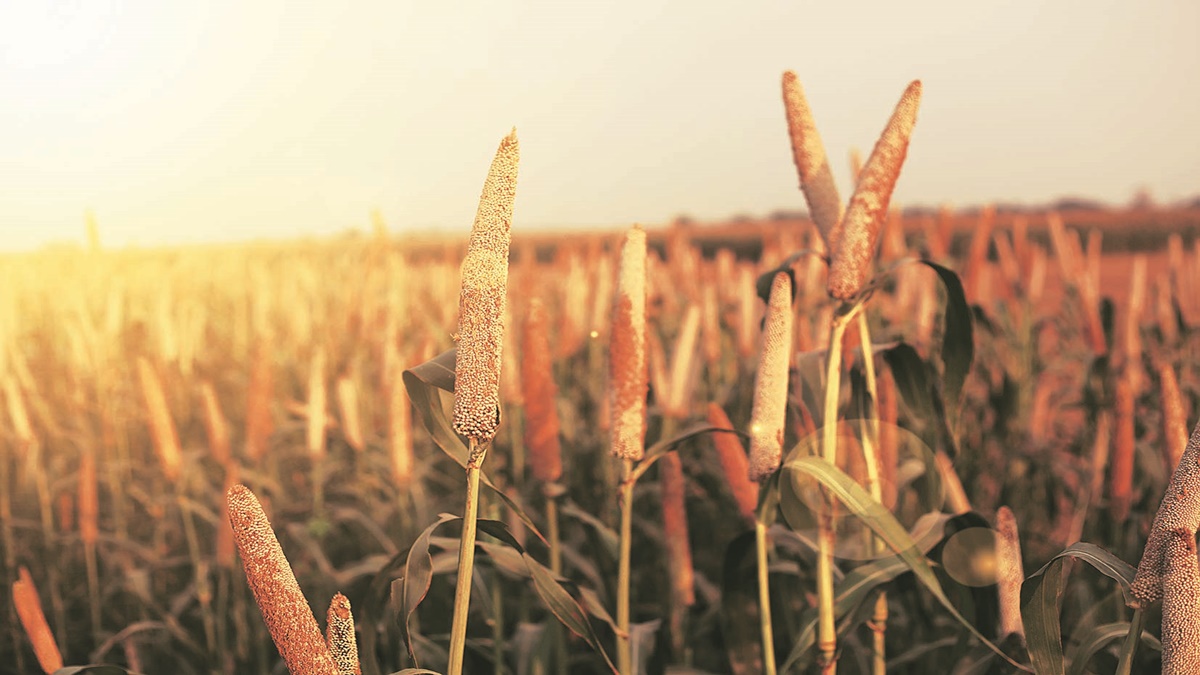By Dr K Madan Gopal & Sumit Kaushik
A significant change happened under a hot sun, where green sorghum and finger millet used to grow. The Green Revolution brought a lot of wheat and rice to India, pushing these old and nutritious grains to the side. They became forgotten, only mentioned in old recipes and stories. In the 1960s, the Green Revolution transformed India’s agricultural landscape, relegating millets to the sidelines and earning them the unfortunate ‘orphan crops.’ This shift not only altered dietary patterns but also impacted the nutritional landscape. However, in recent years, there has been a notable renaissance in the consumption and cultivation of millet in India. Traditionally considered “Nutri-cereals” or “dryland cereals,” millets are returning due to their numerous health benefits, environmental sustainability, and adaptability to diverse agro-climatic conditions.
On December 20, 2021, NITI Aayog signed a Statement of Intent (SoI) with the United Nations World Food Programme (WFP). The partnership focused on mainstreaming millets and supporting India in leading globally in knowledge exchange, using the opportunity of 2023 as an International Year of Millets. Recognising the importance of millets, the Government of India has been actively promoting millets as part of its strategy for sustainable agriculture and improved nutrition. Initiatives like the Millets Sub-Mission under the National Food Security Mission, State Millet Missions, and the celebration of the International Year of Millets have significantly boosted the cultivation and consumption of millets.
Chefs and food entrepreneurs are increasingly experimenting with millets, incorporating them into various dishes. For traditional recipes, millet-based products such as cookies, snacks, cereals, and millet flour are gaining popularity in urban and rural markets. This culinary innovation expands the market and makes millets more accessible to a broader audience. Earlier this year, the Ministry of Home Affairs took a ground-breaking decision to introduce 30% millets in the meals of personnel of the Central Armed Police Forces (CAPFs) and the National Disaster Response Force (NDRF). In alignment with celebrating the International Year of Millets, this decision aimed to promote millets as an energy-rich food choice for paramilitary personnel and to support their physically demanding routines, as millets are loaded with fibre, minerals, and essential nutrients. In August 2023, the Department of Agriculture and Farmers Welfare (DA&FW) also organised a culinary training session for more than 250 chefs and cooks working with paramilitary forces, including the Assam Rifles, Border Security Force (BSF), Central Industrial Security Force (CISF), Central Reserve Police Force (CRPF), Indo-Tibetan Border Police, National Security Guard, Sashastra Seema Bal, and various government canteens. The successful training session acquainted participants with various millet-based recipes, ranging from simple snacks to wholesome meals, which they were eager to incorporate into the daily menus of their canteens and mess facilities.
Millet festivals have become standard nationwide, bringing together farmers, consumers, and policymakers. These events showcase the diverse uses of millets, highlight their nutritional benefits, and create a platform for knowledge exchange. The recently held ASEAN-India Millet Festival is a prime example of how such events foster international collaboration and awareness. This unique grain aligns with the Sustainable Development Goals and addresses concerns related to climate action, zero hunger, and sustainable consumption and production. Beyond their nutritional benefits, millets offer a lifeline to farmers, promoting stability in uncertain climates and empowering them with sustainable incomes.
The advent of digital platforms and e-commerce has facilitated direct-to-consumer models for millet products. Farmer Producer Organisations (FPOs) are leveraging online platforms to sell millet directly to consumers, eliminating intermediaries and ensuring fair returns to farmers. The Millets Giveaway campaign by the Small Farmers’ Agri-Business Consortium adds a unique dimension. Encouraging direct purchases from Farmer Producer Organisations (FPOs), the campaign supports small and marginal farmers while promoting the adoption of millets. The buyers get pure and authentic produce, and with their purchase, they support the livelihoods of small and marginal farmers. The buyers experience how easy it is to use the ONDC’s My Store platform. Millets being the focus for the year with #IYM2023, this campaign motivates more people to adopt Shree Anna, i.e., millets. It aligns with the vision of a sustainable future, emphasising the importance of millets in nourishing individuals and nurturing the earth.
Millets are nature’s gift to humanity, offering a promising sustainable food source for future generations. As India spearheads initiatives to revive the cultivation and consumption of millets, it not only ensures nutritional security but also paves the way for a healthier and more sustainable agricultural sector. As we embrace millets through campaigns like #IYM2023, we nourish ourselves and contribute to a healthier planet and a secure future. Millets are not just grains; they symbolise hope, resilience, and a commitment to sustainable living. The trends shaping the millet landscape in India reflect a broader shift towards sustainable and nutritious food choices. As millets continue to gain traction, not just as a traditional staple but as a modern superfood, they are poised to play a crucial role in transforming India’s agriculture and improving the health and well-being of its people.
We must all play our part as India leads the charge in reviving these nutritional powerhouses. Embrace millets on your plate, champion their cultivation in your communities, and join the voices calling for a more sustainable food system. Together, let us rewrite the narrative – from orphan crops to global heroes, nourishing our bodies and our planet. Let the whispers of the past become the shouts of a thriving future fueled by the humble yet mighty millet.
(Dr K Madan Gopal, Advisor, Public Health Administration, NHSRC, a premier think tank for MoHFW, GOI and Sumit Kaushik, a PhD candidate at O.P. Jindal Global University and a social impact consultant. Views expressed are personal and do not reflect the official position or policy of the FinancialExpress.com.)
